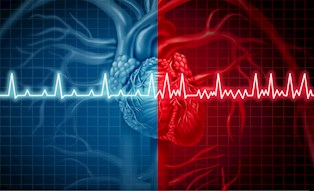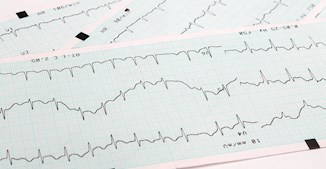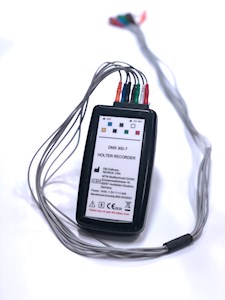Written by Associate Professor Harry G Mond OAM
Since its introduction as a clinical investigative tool, the 12-lead electrocardiograph (ECG) has been the gold standard for recognition of cardiac arrhythmias. The resting 12-lead ECG, however, only gives a rhythm snapshot in time, whereas arrhythmias may be short-lived, paroxysmal and even asymptomatic, making documentation in many patients very difficult. Ambulatory ECG monitoring has been developed as a means of recording the ECG over a set period of time in patients suspected of having cardiac arrhythmias.
ARRHYTHMIA INDICATIONS FOR AMBULATORY ECG MONITORING
A Holter monitor is preferable to all other monitoring as it provides a 24-hour window of the heart rate changes and can be partnered to symptoms.
- Cardiac palpitations
This is by far the most common indication for ambulatory ECG monitoring. Generally, a Holter monitor is performed even when symptoms are infrequent. - Unexplained syncope or dizziness
This is a very important group. If symptoms are frequent such as daily dizziness, Holter monitoring is very useful and is generally the initial investigation in patients even with relatively infrequent episodes. - Suspected slow heart rhythms
Holter monitoring remains the most important investigation in the evaluation of symptomatic patients who are being assessed for pacemaker implantation. - Hereditary ‘‘electrical” abnormalities
This diverse group involves a number of hereditary abnormalities associated with cardiac arrhythmias. The most common is Wolff-Parkinson White syndrome manifested by an accessory pathway, ventricular preexcitation and atrioventricular re-entrant tachycardia. - Evaluate the abnormal ECG; ectopy and heart block
- Cryptogenic stroke evaluation to document paroxysmal atrial fibrillation
- Evaluation of success of either antiarrhythmic or ablative therapy
- Evaluation of ventricular tachycardia
- Paediatric monitoring
- Following acute myocardial infarction
- Potentially lethal arrhythmias with congestive and hypertrophic cardiomyopathy
- Monitor cardiac implantable electronic device therapy
- Chest pain or dyspnoea thought to be associated with arrhythmias

THE ROLE OF GPs IN CARDIAC TESTING
Cardiologists prefer that patients presenting with the common warning signs discussed above – palpitations, unexplained dizziness, slow heart rhythms – undertake Holter monitor testing from their GP before they are referred on. The patient can undertake the Holter test as they wait to see a cardiologist. Then the cardiologist already has the data and results on-hand when the patient sees them. This will shorten the diagnostic process, allowing the cardiologist to make the most informed decision from the outset.
MONITORING HARDWARE
The most frequently used hardware is the 24-hour Holter monitor. Current models are now small and light and carried around the neck, on a belt or in the pocket, have a patient actuated button for event recording, and are battery operated.
|
|
- Holter Monitor Service Available at Clinical Labs - |
DATA ANALYSIS
The major function of ambulatory ECG monitoring is to document an abnormality in cardiac rhythm.
Data analysis is completed by the following steps
1. Once your patient has finished with their 24-hour Holter monitor and returned the monitor to the collection centre, the monitor is then sent to the nearest Clinical Labs laboratory where the recorded data is retrieved from the memory card and sent to CardioScan (Holter monitors ordered through Clinical Labs are supplied by CardioScan).
2. The raw data is then computer-scanned by CardioScan technicians trained to recognise abnormal ECG patterns.
3. Once it is determined that the study is of satisfactory quality, it is then analysed and a report is generated.
4. The final report is then confirmed by an experienced CardioScan cardiologist, returned to Clinical Labs and sent on to the referring doctor.
REPORT INTERPRETATION
The most important information from the Holter monitor report is contained in the Summary Page.
This includes:
- Summary of the 24-hour study and significant events
- Cardiologist conclusion
For the reporting physician, there is a minimal knowledge requirement for competency in interpreting ambulatory ECG monitoring reports.
For more information on Ambulatory Electrocardiographic Monitoring see Associate Professor Harry G Mond’s article ‘The Spectrum of Ambulatory Electrocardiographic Monitoring’ published in Heart, Lung and Circulation (2017) 26, 1160–1174.
About the author
Associate Professor Harry G Mond OAM
MD, PhD, FRACP, FACC, FCSANZ
Medical Director CardioScan Pty Ltd
Dr Harry Mond is an Associate Professor at both the University of Melbourne and Monash University. After training at The Royal Melbourne Hospital and in Atlanta Georgia, he has been practicing as a Cardiologist in Melbourne since 1975. He is Australia’s leading expert in cardiac pacing with extensive experience in pacemaker implantation and follow-up.
How to order Holter monitor testing at Clinical Labs:
1. Complete a Clinical Labs referral form and request 24-hour Holter monitor.
2. Patients will need to book an appointment at their closest Clinical Labs collection centre to have the Holter monitor fitted.
Patients in VIC and NSW need to visit the Clinical Labs website clinicallabs.com.au/location. Type in their postcode and select ‘Holter’ from the drop-down box. Select their closest collection centre and call the number listed.
Patients in SA need to call SA Cardiac Services on (08) 8205 5644 to make an appointment.
3. Out of pocket cost of $40 for Medicare card holders for the first 24 hours, bulk billed for pension card holders. $185.50 out of pocket cost for each additional 24 hours.
(SA - Bulk billed for Medicare card holders, for the first 24 hours. $185.50 out of pocket cost for each additional 24 hours.)
NB: Your patient’s Holter monitor report will be available within 5 business days from the return of the Holter monitor to the Clinical Labs Collection Centre.




